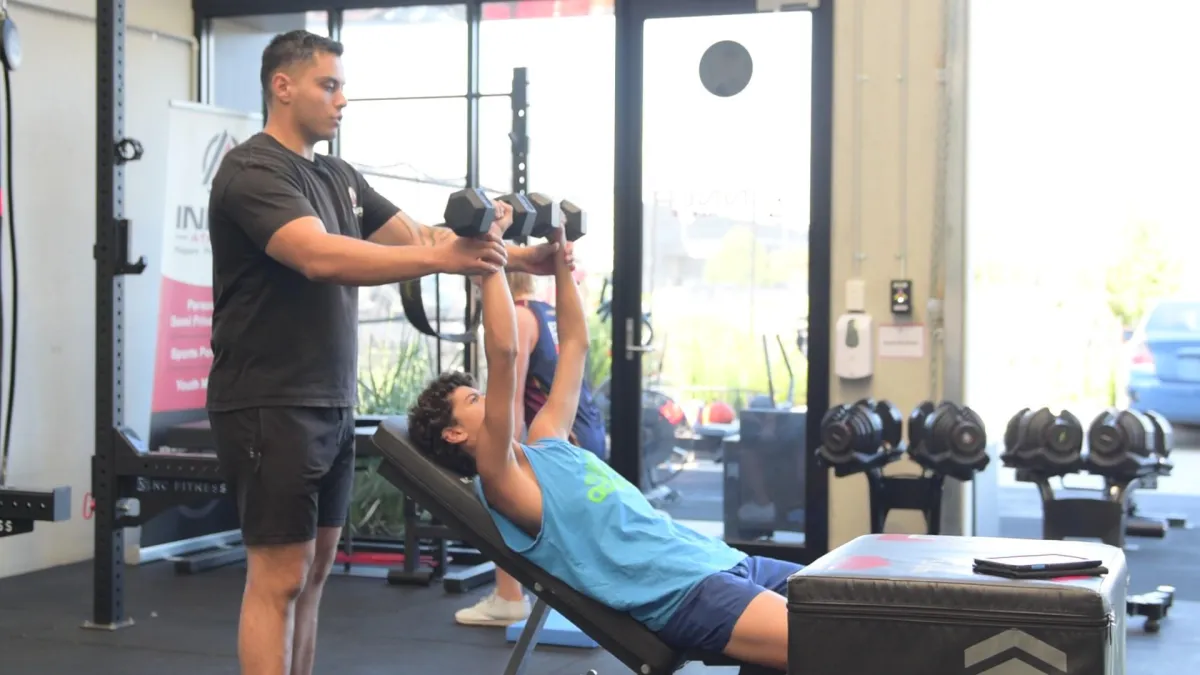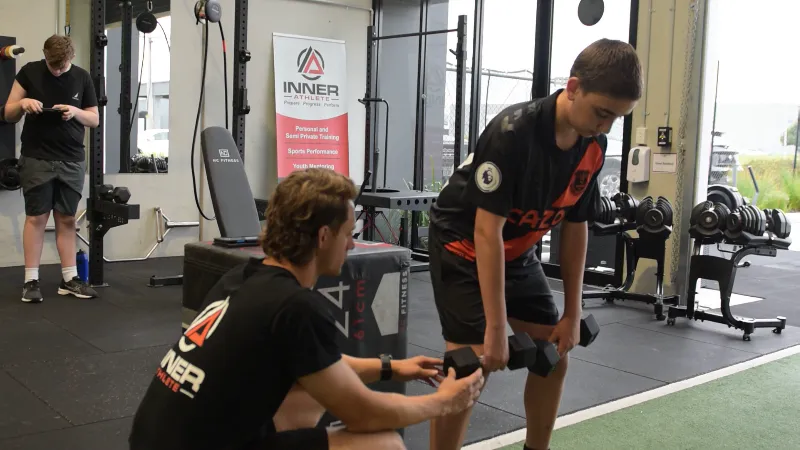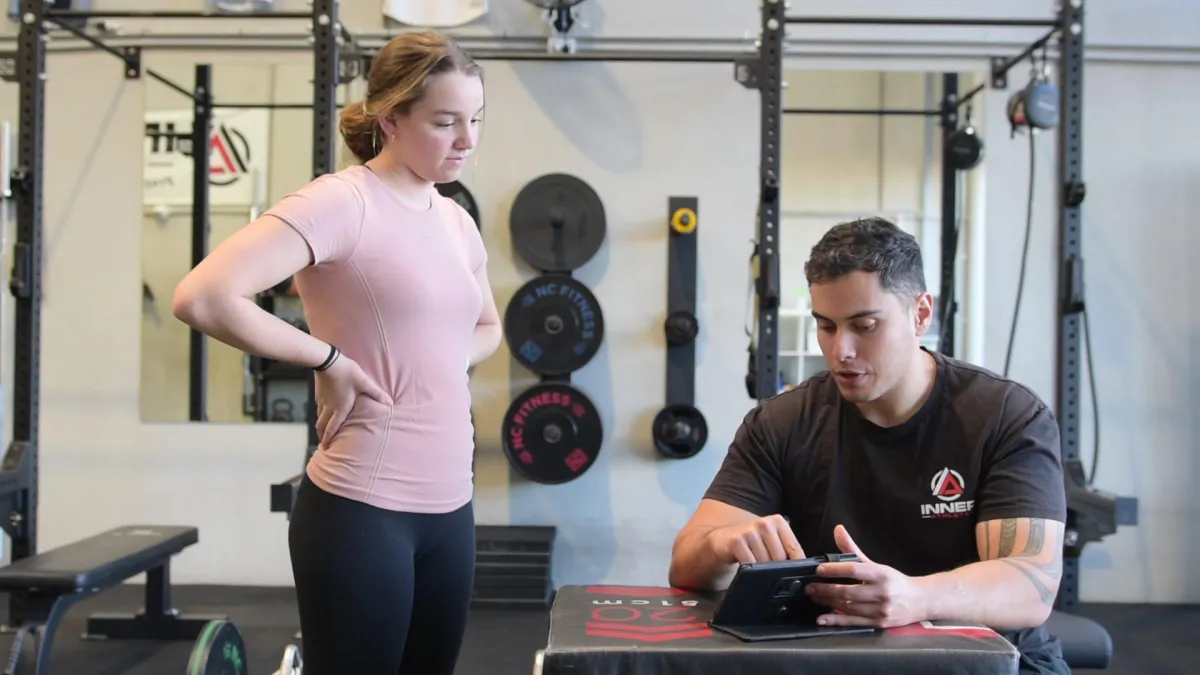UNIT 13, 49 GRANGE ROAD, CHELTENHAM, MELBOURNE, VICTORIA, 3192
Bayside’s premium strength and conditioning coaching for adults and youth athletes!
Prepare. Progress. Perform.
Overcome Injuries
Achieve Personal Bests
Improve Sporting Performance

Injured and/or not seeing improvements in your sport?
The Inner Athlete team will help you...
Overcome lingering injuries that are holding you back
Become faster, fitter and stronger to enhance and achieve Personal Bests
Build confidence and what you need to know to keep your results long-term
Feel And Perform Better With The Right Support
Youth Athlete Development
Overcome injuries, become faster, stronger, and fitter to help your child reach the next level.

Strength And Conditioning For Adults
Look, feel, and perform your best! Overcome injuries, create more energy, and enjoy your life!

Teen Confidence Builder
Help your child to develop the confidence to keep up with their peers in their sport. Develop a positive self-image and confidence in themselves.

Feel And Perform Better With The Right Support
Youth Athlete Development
Overcome injuries, become faster, stronger, and fitter to help your child reach the next level.
Strength And Conditioning For Adults
Look, feel, and perform your best! Overcome injuries, create more energy, and enjoy your life!
Teen Confidence Builder
Help your child to develop the confidence to keep up with their peers in their sport. Develop a positive self-image and confidence in themselves.
Feel And Perform Better With The Right Support
Youth Athlete Development
Overcome injuries, become faster, stronger, and fitter to help your child reach the next level.
Strength And Conditioning For Adults
Look, feel, and perform your best! Overcome injuries, create more energy, and enjoy your life!
Teen Confidence Builder
Help your child to develop the confidence to keep up with their peers in their sport. Develop a positive self-image and confidence in themselves.
Get Started Now
Follow the 3 step process to get results
STEP 1
Book A Consultation
Schedule your first conversation with our Head Strength Coach to discuss your personal needs.
STEP 2
Design Your Program
Together we’ll customise your training program to achieve your personal goals
STEP 3
See Results
With your personalised program and individualised guidance, start training effectively to achieve your personal goals.
Founder's Story, Trent Pirihi...
As a former 'fat kid' who was limited physically and mentally, I understand
the struggles of trying to keep up in team and individual sports.
As a young athlete playing Rugby League, I experienced the rigours and strain sport has on a growing body.
Finding the right guidance and support under one roof to help me develop into the person I wanted to become was challenging.
When I had the right mentors around me, I was able to overcome many of those
issues that held me back.
Inner Athlete facility is based on my time at U.S. D1 College and the semi-private training from U.S. private strength and conditioning sector.
We provide the training, support and mentoring that many young athletes and
teens need both physically and emotionally to become their best in sport and life!
Former 'Fat Kid' To Leader
Founder's story, Trent Pirihi...
As a former 'fat kid' who was limited physically and mentally, I understand the struggles of trying to keep up in team and individual sports.
As a young athlete playing Rugby League, I experienced the rigours and strain sport has on a growing body.
Finding the right guidance and support under one roof to help me develop into the person I wanted to become was challenging.
When I had the right mentors around me, I was able to overcome many of those issues that held me back.
Inner Athlete facility is based on my time at U.S. D1 College and the semi-private training from U.S. private strength and conditioning sector.
We provide the training, support and mentoring that many young athletes and teens need both physically and emotionally to become their best in sport and life!

Trent Pirihi
HEAD STRENGTH COACH
David Dobson
STRENGTH COACH
Jack Courtie
STRENGTH COACH
Billy Zebra
STRENGTH COACH
Laura Marks
STRENGTH COACH
Stay informed
Subscribe to receive youth athlete development news, podcast updates, and much more!
What Clients Say About Us
Contact Us
Email
[email protected]
Address
13/49 Grange Rd, Cheltenham 3192 (opp. DFO)
Phone 0483 956 560
Follow Us
